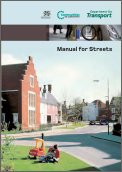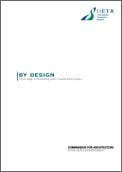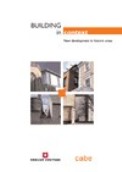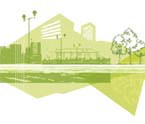Design
The Government attaches great importance to the design of the built environment. “Good design is a key aspect of sustainable development, is indivisible from good planning, and should contribute positively to making places better for people.” Para 56 NPPF
The National Planning Policy Framework (NPPF)
The National Planning Policy Framework was published on 27 March 2012. This is a key part of Government reforms to make the planning system less complex and more accessible, to protect the environment and to promote sustainable growth. One of the core planning principles of the NPPF is that local authorities should always seek to secure high quality design and a good standard of amenity for all existing and future occupants of land and buildings; Para 17 NPPF
“Permission should be refused for development of poor design that fails to take the opportunities available for improving the character and quality of an area and the way it functions”. Para 64
National Planning Policy Framework (NPPF)
Government Guidance on heritage assets
The NPPF supersedes Planning Policy Statement 5: Planning for the Historic Environment (PPS5) as Government Policy on the management of change to the Historic Environment in England.
Please note, the PPS5 Practice Guide remains a valid and Government endorsed document pending the results of a review of guidance supporting national planning policy. The references to PPS5 policies in this document are obviously now redundant, but the policies in the NPPF are very similar and the intent is the same, so the Practice Guide remains almost entirely relevant and useful in the application of the NPPF.
PPS5 Practice Guidance
Local Planning Policy
Policies referring to building design are contained in the Island Plan Isle of Wight Core Strategy section 7 Development Management Policies DM2 Design Quality for New Development and DM11 Historic and Built Environment
Island Plan Isle of Wight Core Strategy
Former Supplementary Planning Guidance SPGs and Supplementary Planning Documents SPDs
The following documents were adopted as SPGs to support the Unitary Development Plan (UDP). Now that the UDP has been replaced by the Island Plan Core Strategy, the SPGs are no longer formal guidance documents. However, the council will continue to use the following former SPGs as informal guidance documents where relevant:
- Village Design Statements previously adopted as SPG
- Newport Harbour Regeneration (A3 format - this is a large pdf file and may take some time to download)
- Extending Your Home
- Advertisements and Shopfronts
- Residential Layouts
- Conversion of Rural Buildings
- Wind Farms & Wind Turbines
- Design for Community Safety
- Ventnor Esplanade – Interim Design & Development Advice (this is not SPG but has been adopted locally and accepted by Planning Committee)
Submitting Better Planning and Listed Building Applications
In order to give yourself the best possible chance of gaining planning permission, it is essential that you present your proposals fully, clearly and accurately. Failure to do so will result in the application being delayed or being refused which costs you time and money. Unless you have the necessary skills it is advisable to employ a qualified architect or planning consultant to act as your agent.
A short guide, Making Better Planning Applications and Making Better Applications for Listed Building Consent have been published by English Historic Towns Forum.
There are a wide range of design guides published by the Design Council CABE wed site
There are a wide range of design guides published by the Design Council CABE wed site
Design and Access Statements - how to write, read and use them.
The work involved in preparing a design statement corresponds with the steps normally carried out in a proper design process. A design and access statement should be a record of these steps. A design statement should not be a justification for a pre-determined design solution.
Guidance notes about Design and Access statements are issued with Planning Application forms but further information can be found on the CABE wed site
Building in the Historic Environment
| | Designing new buildings in the historic environment requires exceptional skill says: “Local planning authorities are encouraged to seek well-conceived and inspirational design that is founded on a full understanding of local context”. Para 44 PPS5 Practice Guidance Further guidance on designing for historic environments can be found in Building-in-context New Development in Historic Areas by CABE. |
Manual for Streets
 | The Manual for Streets (MfS) supersedes Design Bulletin 32 and its companion guide Places, Streets and Movement. Manual for Streets is predominantly for the design, construction, adoption and maintenance of new residential streets but is also applicable to existing residential streets subject to re-design. MfS aims to assist in the creation of streets that:
|
By Design – Urban Design in the Planning System
 | By Design is intended as a companion to the PPGs and PPSs now formally replaced by the NPPF It aims to encourage better design and thinking about urban design. By Design – Urban Design in the Planning System: towards better practice sets out the following seven design objectives:
|
Building a Better Environment
| | Practical advice on adding value to your site can be found in a document called A guide for Developers Building a Better environment “We know that development doesn’t have to harm the environment. Well located, planned and designed, it can actually make improvements to the environment and provide a better place to live.” A guide for developers is an essential tool to use in the early stage of development. It provides Environment Agency advice on making sure development contributes to the long-term environmental quality of our Island. |
Page last updated on: 02/10/2012







